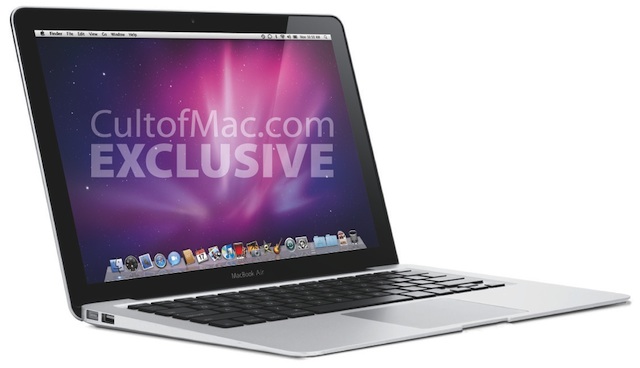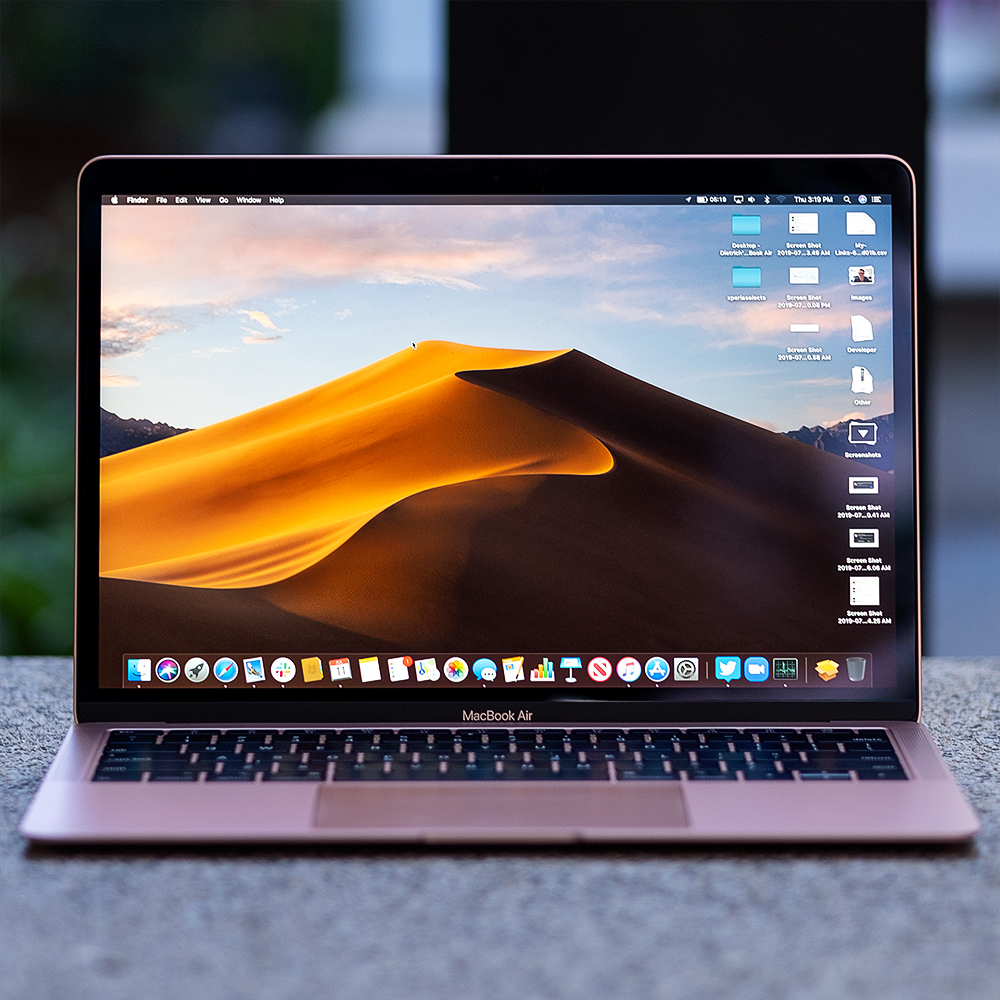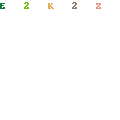- Photo Credit: Apple, Inc. (Left - 11' MacBook Air, Right - 13' MacBook Air) Identification Help. As these MacBook Air models share Model Numbers with other lines, so this identifier is not suitable for the purpose of upgrading the SSD. However, these models can be readily identified externally via EMC Number and in software by Model Identifier.
- Testing conducted by Apple in October 2020 using preproduction MacBook Air systems with Apple M1 chip and 8-core GPU, as well as production 1.2GHz quad-core Intel Core i7-based MacBook Air systems with Intel Iris Plus Graphics, all configured with 16GB RAM and 2TB SSD. Tested with prerelease Shapr3D 3.45.0 using a 288.2MB model.
- The MacBook Air was most recently updated in March of 2020. Updates inlcuded the new Magic Keyboard, faster processor, and 256 GB of storage as default.
Update your MacBook: Use this solution when encountering issues with an external display. With the cable still attached, click System Preferences on the Dock and choose Software Update. The MacBook Pro is a line of Macintosh portable computers introduced in January 2006 by Apple Inc. It is the higher-end model of the MacBook family, sitting above the consumer-focused MacBook Air, and is sold with 13- and 16-inch screens. A 17-inch version was sold from April 2006 to June 2012.
MacBook Air Q&A
Update Published August 13, 2019
All Mac Q&As >>MacBook Air Q&A (Home) | Also See: All MacBook Air Specs
To be notified of new Q&As, sign up for EveryMac.com's bimonthly email list.

If you find this page useful, please Bookmark & Share it. Thank you.
How do you replace or upgrade the storage in the 'Late 2010' and 'Mid-2011' MacBook Air models? Is it even possible?
This Q&A covers the 'Late 2010' and 'Mid-2011' MacBook Air models (A1370, A1369). EveryMac.com provides storage upgrade instructions for other MacBook Air models -- the original, 'Late 2008,' and 'Mid-2009,'Mid-2012,' and 'Mid-2013,' 'Early 2014' and 'Early 2015/Mid-2017' lines, too.

The 11-Inch 'Late 2010' and 'Mid-2011' MacBook Air models originally were configured with either 64 GB or 128 GB of flash storage.
Likewise, the 13-Inch 'Late 2010' and 'Mid-2011' MacBook Air models originally were configured with either 128 GB or 256 GB of flash storage, again, decided at the time of purchase.
Officially, it is not possible for an end user to upgrade the storage in these models after purchase. Unofficially, however, it is quite possible for the technically inclined.
Photo Credit: Apple, Inc. (Left - 11' MacBook Air, Right - 13' MacBook Air)
Identification Help
If you're not sure if you have a 'Late 2010' or 'Mid-2011' MacBook Air, EveryMac.com has hand documented that the 11-Inch and 13-Inch 'Late 2010' and 'Mid-2011' MacBook Air models share the A1370 and A1369Model Numbers, respectively (which is visible on the bottom in tiny text toward the hinge), and can be collectively identified externally this way. As they also share SSD storage, this is sufficient identification for this upgrade.
These models likewise can be pinpointed by Model Identifier in software. The 'Late 2010' models use MacBookAir3,1 and MacBookAir3,2 for the 11-Inch and 13-Inch models, respectively, and the 'Mid-2011' models use MacBookAir4,1 and MacBookAir4,2.
Finally, EveryMac.com's Ultimate Mac Lookup feature -- as well as the EveryMac app -- additionally can uniquely identify these MacBook Air models by their serial numbers.
Upgrade Obstacles & SSD Details
Apple definitely does not intend for end users to upgrade the internal storage on these models themselves. In fact, the company has used obscure 'Pentalobe' or 'Five Point Torx' screws to make access more difficult.
Macbook Air 2010 Latest Update
Although access may be more challenging than it needs to be, as firstspotted by AnandTech's Anand Lai Shimpi, the flash storage used in these MacBook Air models has an industry-standard mini SATA connector. When this Q&A was first published on November 9, 2010, EveryMac.com speculated that upgrades theoretically should be possible assuming that they had not been blocked in software. Thankfully, this speculation turned out to be correct and Apple has not blocked upgrades.
Since the 'Late 2010' MacBook Air was released initially, several companies unveiled compatible storage. One of the first, as noted by Engadget Japan, was Toshiba, with compatible 64 GB, 128 GB and 256 GB 'Blade X-Gale' flash storage modules. As first documented by MacRumors, the Toshiba Blade X-Gale line even had the same part numbers as the flash storage used in the 'Late 2010' MacBook Air models. However, the 256 GB module, which is 3.7 mm thick (compared to 2.2 mm thick for the 64 GB and 128 GB modules), may not fit in the 11-Inch model.

More recently, site sponsor OWC released the Mercury Aura Pro Express line of SSD upgrades for the 'Late 2010' and 'Mid-2011' MacBook Air lines. These upgrades are available in 120 GB, 240 GB, and 360 GB capacities and fit in all of these 11-Inch and 13-Inch models.
SSD Upgrade Instructions
Unlike earlier MacBook Air models that require one to remove the bottom plate of the notebook and the battery before accessing the storage, the 'Late 2010' and 'Mid-2011' models have the SSD module readily accessible after removing the bottom plate. Consequently, installation is simple and OWC provides the needed screwdrivers along with the SSD module.
OWC provides these helpful step-by-step upgrade videos, too:
'Late 2010' 11-Inch MacBook Air
'Late 2010' 13-Inch MacBook Air
'Mid-2011' 11-Inch MacBook Air
'Mid-2011' 13-Inch MacBook Air
This video covers how to install the original SSD from your MacBook Air in OWC's convenient 'Envoy' housing to repurpose it as an external drive:
By watching the video for your particular MacBook Air above, you should be able to determine if you feel comfortable performing this upgrade yourself or if you would instead prefer to hire a professional.
For the performance difference between different SSD modules -- which can be substantial -- BareFeats also has benchmarks that you may wish to review, as well.
SSD Purchase Options
In the US (and many other countries), site sponsor OWC offers the Mercury Aura Pro Express + Envoy upgrade kit (which provides both a new SSD and an external enclosure to repurpose your older SSD as an external drive) for the 'Late 2010' and 'Mid-2011' models alike.
In the UK and Ireland, site sponsor Flexx sells MacBook Air compatible SSDs with free shipping. The company provides flat rate shipping to France, Germany, and Switzerland and inexpensive shipping for all of Europe, too.
In Canada, site sponsor CanadaRAM sells MacBook Air SSDs with guaranteed compatibility, fast shipping, and no customs duties to worry about.
In Australia, site sponsors Macfixit and Upgradeable sell MacBook Air compatible SSDs with fast shipping, a money-back guarantee and more.
In New Zealand, site sponsor Upgradeable New Zealand sells MacBook Air SSDs with fast delivery to all corners of the country, precise compatibility, a lifetime warranty, and a money-back guarantee.
Also see:
- How do you replace or upgrade the hard drive in the original, 'Late 2008' and 'Mid-2009' MacBook Air models? Can you swap the hard drive for an SSD?
- How do you replace or upgrade the storage in the 'Mid-2012' MacBook Air models? Is it even possible?
- How do you replace or upgrade the storage in the 'Mid-2013' MacBook Air models? Is it even possible?
- Which SD Card Slot storage solution is best for the MacBook Air? Which models are compatible? Is this kind of storage safe?
Permalink | E-mail a Friend | Bookmark & Share | Report an Error/Typo
Suggest a New Q&A | Sign Up for Bimonthly Site Update Notices
<< MacBook Air Q&A (Main)
EveryMac.com is provided 'as is' without warranty of any kind whatsoever. EveryMac.com, and the author thereof, shall not be held responsible or liable, under any circumstances, for any damages resulting from the use or inability to use the information within. For complete disclaimer and copyright information please read and understand the Terms of Use and the Privacy Policy before using EveryMac.com. Use of any content or images without expressed permission is not allowed, although links to any page are welcomed and appreciated.
MacBook Air Q&A
Update Published January 27, 2021
All Mac Q&As >>MacBook Air Q&A (Home) | Also See: All MacBook Air Specs
To be notified of new Q&As, sign up for EveryMac.com's bimonthly email list.
If you find this page useful, please Bookmark & Share it. Thank you.
Macbook Air 2010 Update 2017
How do you upgrade or replace the storage in the 'Mid-2013,' 'Early 2014' and 'Early 2015' and '2017' MacBook Air models? Is it even possible?
Note that EveryMac.com provides storage upgrade instructions for earlier MacBook Air models -- the original, 'Late 2008,' and 'Mid-2009,'Late 2010 and 'Mid-2011,' and 'Mid-2012' lines, too.
By default, the 'Mid-2013,' 'Early 2014,' and 'Early 2015' and '2017' MacBook Air models all shipped with 128 GB or 256 GB of SSD storage. Some configurations could be upgraded to 512 GB of SSD storage at the time of purchase for an extra US$300, but Apple does not intend for one to upgrade the SSD module after purchase.
Nevertheless, the SSD is a removable module and it is quite possible for a technical user to upgrade the SSD himself or herself.
Photo Credit: Apple, Inc. (Left - 11' MacBook Air, Right - 13' MacBook Air)
Identification Help
As these MacBook Air models share Model Numbers with other lines, so this identifier is not suitable for the purpose of upgrading the SSD.
However, these models can be readily identified externally via EMC Number and in software by Model Identifier.
To locate the model identifier in software, select 'About This Mac' under the Apple Menu on your computer and click the 'More Info...' button. If the iMac is running OS X 10.7 'Lion' or later, you will need to click the 'System Report' button after clicking 'More Info...' as well. As always, EveryMac.com has carefully hand documented each EMC number and model identifier for your convenience.
The identifiers for each of these MacBook Air models follow:
MacBook Air | Subfamily | Model ID | EMC |
Mid-2013 | |||
Mid-2013 | |||
Mid-2013 | |||
Mid-2013 | |||
Early 2014 | |||
Early 2014 | |||
Early 2014 | |||
Early 2014 | |||
Early 2015 | |||
Early 2015 | |||
Early 2015 | |||
Early 2015 | |||
Early 2015 | |||
2017 | |||
2017 |
EveryMac.com's Ultimate Mac Lookup feature -- as well as the EveryMac app -- also can uniquely identify these models by their Serial Number, which is listed on the underside near the EMC number and within the operating system alongside the model identifier. More details about specific identifiers are provided in EveryMac.com's extensive Mac Identification section.
SSD Storage Details
As first reported by AnandTech, the 'Mid-2013' MacBook Air models all use a PCIe-based SSD rather than a SATA-connected one like earlier SSD-equipped MacBook Air models. The 'Early 2014' MacBook Air models are practically identical to their predecessors and use the exact same internal storage.
More specifically, AnandTech shared that the SSD in these lines use a custom Apple design with a 'PCIe 2.0 x2 interface, capable of a theoretical maximum of 1 GB/s in each direction.'
The 11-Inch 'Early 2015' MacBook Air models (MacBookAir7,1) also use the same PCIe 2.0 x2 interface, but as documented by site sponsor OWC, the 13-Inch 'Early 2015' and '2017' models (MacBookAir7,2), on the other hand, have a faster PCIe 2.0 x4 interface and provide significantly faster drive speeds as a result.
Storage Installation Instructions
Apple has used less common 'Pentalobe' or 'Five Point Torx' screws to make access more difficult, but with the correct screwdriver, upgrading the SSD is a straightforward procedure.
Site sponsor Other World Computing has helpful videos that covers upgrading the storage in these models, too:
11-Inch MacBook Air (Mid-2013 - Early 2015)
13-Inch MacBook Air (Mid-2013 - 2017)
Macbook Air 2010 Update Download
This video covers how to install the original PCIe SSD from your MacBook Air in OWC's convenient 'Envoy Pro' external case to repurpose it as an external drive:
By watching the videos for the MacBook Air above, you should be able to determine if you feel comfortable performing this upgrade yourself or if you would instead prefer to hire a professional.
SSD Purchase Options

In the US (and many other countries), site sponsor Other World Computing sells compatible SSDs as well as other upgrades for MacBook Air models.
In the UK and Ireland, site sponsor Flexx sells MacBook Air compatible SSDs with free shipping. The company provides flat rate shipping to France, Germany, and Switzerland and inexpensive shipping for all of Europe, too.
In Canada, site sponsor CanadaRAM sells MacBook Air SSDs with guaranteed compatibility, fast shipping, and no customs duties to worry about.
In Australia, site sponsors Macfixit and Upgradeable sell MacBook Air compatible SSDs with fast shipping, a money-back guarantee and more.
In New Zealand, site sponsor Upgradeable New Zealand sells MacBook Air SSDs with fast delivery to all corners of the country, precise compatibility, a lifetime warranty, and a money-back guarantee.
Also see:
- How do you replace or upgrade the hard drive in the original, 'Late 2008' and 'Mid-2009' MacBook Air models? Can you swap the hard drive for an SSD?
- How do you replace or upgrade the storage in the 'Late 2010' and 'Mid-2011' MacBook Air models? Is it even possible?
- How do you replace or upgrade the storage in the 'Mid-2012' MacBook Air models? Is it even possible?
- Which SD Card Slot storage solution is best for the MacBook Air? Which models are compatible? Is this kind of storage safe?
Permalink | E-mail a Friend | Bookmark & Share | Report an Error/Typo
Update 2010 Macbook Air
Suggest a New Q&A | Sign Up for Bimonthly Site Update Notices
<< MacBook Air Q&A (Main)
EveryMac.com is provided 'as is' without warranty of any kind whatsoever. EveryMac.com, and the author thereof, shall not be held responsible or liable, under any circumstances, for any damages resulting from the use or inability to use the information within. For complete disclaimer and copyright information please read and understand the Terms of Use and the Privacy Policy before using EveryMac.com. Use of any content or images without expressed permission is not allowed, although links to any page are welcomed and appreciated.

